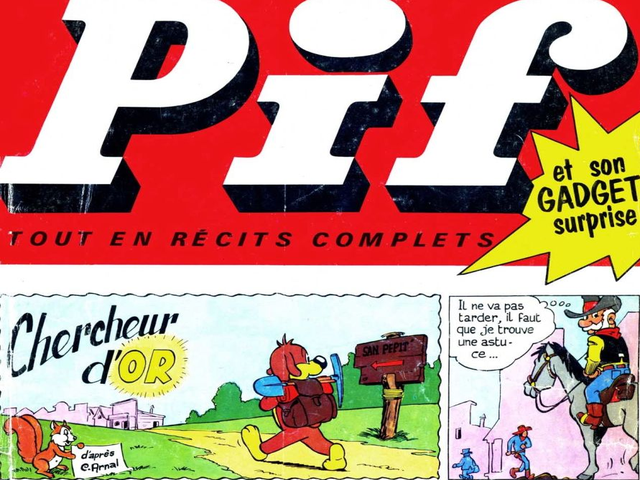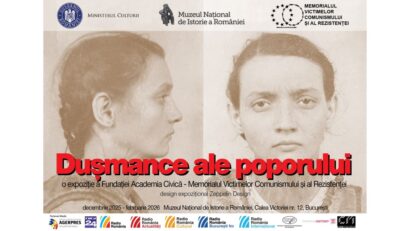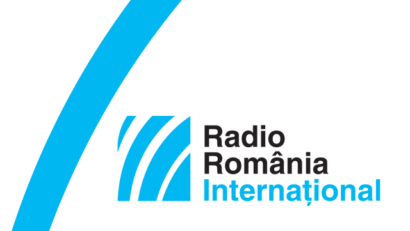Comic Books in Socialist Romania
Comic books, a form of Western urban pop culture, was for that reason a victim of communist regime censorship.

Steliu Lambru, 10.11.2014, 13:12
In Socialist Romania, the widest circulation was enjoyed by the magazine called “Cutezatorii” — “The Valiant”, the propaganda publication of the regime aimed at children under 14, the age ceiling for the Pioneers, the children’s communist organization. As such, it had a severely limited content.
The one publication that sparked the appetite of several generations of Romanian children for comics was undoubtedly Pif Gadget, as we were told by Ioan Stanomir, comic book historian:“Pif Gadget is one of the strangest and most convoluted stories of the Cold War. It was a magazine that grew out of the ruins of a magazine called Vaillant. Just like ‘The Valiant’ of Romania, it had a twofold purpose: entertainment, as a comic book, but also as a propaganda tool for the French Communist Party. The fact that Pif Gadget penetrated the communist bloc, especially Romania, was made possible by the tight relations that developed between Romania and France, after the 1965-1968 period. It is a relationship that blended on several levels with Gaullist France, as well as with communist subculture and counterculture. That also explains joint film productions. This is how Livre de poche came in from France, how French movies came here, and how this magazine came in, which was probably the most unusual thing in the landscape back then. Through this magazine, you could make contact with French culture; at the same time you made contact with Western culture, as filtered through that magazine. On yet another note, you made contact with a culture that was totally unusual for us, comic book culture. Whole generations of children learned French reading the comics, in a naïve and spontaneous way, and discovered that there was a character called Superman, who came from the planet Krypton. When Superman, played by Christopher Reeve, was seen on the silver screen by Romanian children, they already knew that character from Pif.”
Another major comic book hero in Romania was Rahan. Ioan Stanomir told us his take on the character: “Rahan is famous among Pif fans. He had a cult following, in the sense used in American and Western popular culture. Rahan is a man living at the beginning of the world. He is a link between humans who are not yet humans, and the humans who are about to become humans. He is very similar to American characters in American movies today, such as ‘10,000 BC’. He fights saber tooth tigers, mammoths, and teaches others how to discover their humanity. He is a sort of Prometheus unaware of his own condition. Rahan is still a cult character, if we look at comic book websites, especially Romanian ones. We can see a host of Rahan fans out there, keeping his memory alive. Rahan is based on Tarzan, which is a character that is alive in the West. He is a white man who ignores his condition in the heart of a black continent. This is a form of paternalism, the white man in relation to the black man who is at the beginnings of civilization. However, Pif was definitely not a racist magazine, because that contravened to Western leftist ideology. From this point of view, fed through a communist platform, the magazine was great for kids back then, because it taught them that there were French speaking children all over the place, Ivory Coast, Morocco, France and Romania. That meant you could have a pen pal in any of those countries. I think that the fight against racism, no matter what its ideological angle, is a noble fight, and it was wonderful for a kid in Romania to be able to talk to a kid from Morocco or Senegal. Pif made this possible.”
We asked Ioan Stanomir why there are no Romanian comic book heroes: “When they gave us at school ‘The Valiant’, we just rolled it up and hit each other over the head with it, like it was a toy. I didn’t like that magazine. The heroes we found in Pif were so many. There were Pif and Hercules, obviously. And many of them were adopted by us. We had Rahan, Placid and Muzo, Leonard, Doc Justice, these were our heroes. We couldn’t understand all they said, but we knew that there was this place they came from, nicely wrapped, with wonderful gadgets, and these were the magazines that made us happy. The children back then didn’t want to be pioneers. Even if they were made pioneers, like so many of us, that was not their dream. Their dream was to have those gadgets, those Western consumerist toys. You wanted that put-it-together-yourself glider, not the red pioneer scarf. You wanted the candy that actually tasted like candy, not the tasteless stuff in Romania. Western consumer culture gained ground, because, even in its ideological form, it had to do with a world that had color and had taste. Maybe today young people don’t get that. Taste had a huge role in the fall of communism. The fact that there was a cult of Cuban candy, a cult for Turbo chewing gum, which had taste, not like the Romanian chewing gum, which had none, that says it all. We were living in a world of tasteless clones. I couldn’t care less about the struggle of the underground communist movement. We loved the French underground fighters in the Resistance, they were much more likeable. Pif, in a bizarre and unintentional way, served capitalism in Romania, not communism.”
The history of comic books under socialism ended in 1989, and with it the special status that comic books had.






























